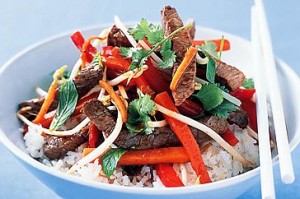- Eat fewer fried and fatty foods such as cream, butter, full-fat dairy products, fatty red meat, cakes, biscuits and takeaways – and find lower-fat alternatives instead.
- If you have to use oil, go for one that is packed with monounsaturates such as olive oil or rapeseed oil.
- Eat five servings of fruit and vegetables every day – they are low in fat and calories but will help to fill you up.
- Go for high-fibre carbohydrates such as wholemeal bread, wholegrain cereals, brown rice and wholewheat pasta. They are far more filling than the white stuff.
- Start your day with a bowl of porridge.
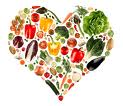
- Use a little less meat in dishes like stews, soups and casseroles and add barley, lentils or beans instead.
- Eat oily fish once a week. Lunch on sardines with toast or serve salmon for dinner.
- Slash the salt content of your diet – check salt levels before you buy.
- If you drink, stick to sensible limits – that means no more than 3-4 units a day for men and 2-3 units daily for women.
Posts Tagged ‘vegetables’
Eating for a Healthy Heart
Monday, July 18th, 2011How to Maintain your Energy Levels
Monday, July 4th, 2011The best way to eat if you want to banish tiredness is to have a healthy, balanced diet that contains foods from four main food groups in the right proportions.
The four food groups are:
- potatoes, bread, rice, pasta and other starchy foods
- fruit and vegetables
- milk and dairy foods
- meat, fish, eggs, beans and other non-dairy sources of protein
- Eat at regular intervals.
- Start the day well with breakfast.
- Aim for 5 a day with fruit and vegetables.
- Say no to sugar.
- Watch your intake of alcohol.
- Eat enough for your activity level.
Low Fat Carrot Cake
Monday, April 11th, 2011Ingredients
For the carrot cake: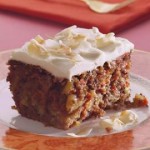
150 g dark brown soft sugar
2 large eggs
120 ml sunflower oil
200 g wholemeal self-raising flour
1½ level teaspoons bicarbonate of soda
3 rounded teaspoons mixed spice
Grated zest 1 orange
Juice of half an orange
200 g carrots, peeled and coarsely grated
275 g chopped dates
For the topping:
250 g low fat soft cheese
20 g icing sugar
2 teaspoons vanilla extract
Grated zest of one orange
1 level teaspoon ground cinnamon
Method
Pre-heat the oven to 170°C.
Line the base of a deep non-stick square cake tin (measuring 8 x 8 inches) with greaseproof paper.
First beat together the sugar, eggs and oil in a bowl for a couple of minutes until smooth.
Now sift together the flour, bicarbonate of soda and the mixed spice into the bowl. Mix well and then fold in the orange zest, orange juice, dates and carrots.
Then pour the mixture into the tin and bake in the centre of the oven for 35 to 40 minutes. Once cooked, remove from the oven and leave to cool on the side.
To make the topping, mix the soft cheese, icing sugar, vanilla extract, orange zest and cinnamon together until light and fluffy. Cover the bowl with clingfilm and put in the fridge for a couple of hours to chill.
Once the cake has cooled, take it out of the tin and spread the topping over it. The cake has to be cold, otherwise the topping will start to melt.
Sprinkle with ground cinnamon and enjoy!
Fibre in your Diet
Monday, February 14th, 2011Fibre is found in foods which originate from plants, such as cereals, grains, seeds, pulses, fruit and vegetables. To increase the amount of fibre you eat, you need to have more of these types of food as part of your diet.
There are two types of fibre: soluble and insoluble. Most foods contain a mixture of both.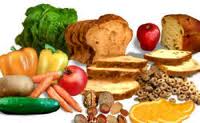
It is a good idea to try to eat more fibre because most people in Ireland don’t have enough fibre in their diets. Insoluble fibre helps prevent constipation, and soluble fibre may help to reduce the amount of cholesterol in the blood.
Wholegrain varieties of starchy foods, such as wholemeal bread, wholegrain breakfast cereals, brown rice and wholegrain pasta, are particularly good sources of insoluble fibre.
Brussels sprouts, potatoes, cabbage, and carrots are all good sources of fibre, and so are beans and pulses, such as red kidney beans, baked beans, broad beans, butter beans, green beans, chickpeas, green lentils and black-eyed beans. Dried fruit – such as figs, apricots, prunes and dates – are also a good choice. Or try eating pears, apples, cranberries, avocados, pomegranates and blackberries.
When you have plenty of fibre in your diet, you need to make sure that you drink plenty of fluids – at least six to eight glasses a day. It is especially important to have plenty of water if you are constipated because fluids will help to keep things moving! If you get constipated a lot, talk to your GP.
Thai Beef and Mixed Pepper Stir-fry
Monday, January 31st, 2011500g lean beef fillet
1 tablespoon sesame oil
1 garlic clove, finely chopped
1 lemon grass stalk, finely shredded
2.5cm piece of fresh root ginger, peeled and finely chopped
1 red pepper, cored, deseeded and thickly sliced
1 green pepper, cored, deseeded and thickly sliced
1 onion, thickly sliced
2 tablespoons lime juice
Freshly ground black pepper
Method:
-
Cut the beef into long thin strips.
-
Heat the oil in a wok or a large frying pan over a high heat. Add the garlic and stir-fry for 1 minute. Add the beef and stir-fry for 2-3 minutes until lightly coloured. Stir in the lemon grass and ginger and remove the pan from the heat. Remove the beef from the pan and set aside.
-
Add the peppers and onion to the pan and stir-fry for 2-3 minutes until the onions are just turning golden brown and are slightly softened.
-
Return the beef to the pan, stir in the lime juice ansd season to taste with pepper. Serve with boiled noodles or rice.
Calories per serving – 255, Serves – 4, Preparation time – 20 minutes, Cooking time – 10 minutes
Keep Warm with Winter Soups
Monday, November 29th, 2010Squash and chilli soup
- 1 medium butternut squash, peeled and cut into 1” cubes
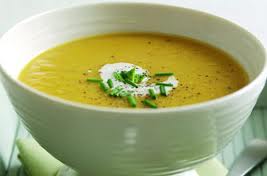
- 1 onion, peeled and finely chopped
- 1 red chilli, cored, deseeded and finely chopped
- 1 tin coconut milk
- Vegetable stock
- Olive oil
- Freshly ground salt and pepper
Sauté the squash, onion and chilli in a little oil for a few minutes then cover and leave over a low heat to sweat gently for 10 minutes. Add the coconut milk and enough stock to cover the vegetables. Bring to the boil and cover. Simmer gently for about 30 minutes or until the squash is tender. Season generously and whizz in a blender until smooth.
Bacon and lentil soup
- 6 oz lentils
- 2½ pints stock
- 1 clove garlic, peeled and finely chopped
- Freshly ground pepper
- 7 oz bacon rashers, finely chopped
- Small can tomatoes
- 1 large onion, peeled and finely chopped
- 1lb potatoes, peeled and diced
- 2 tablespoons lemon juice
Wash the lentils before placing them in a saucepan with the stock, garlic, pepper, bacon, tomatoes and onion. Bring to the boil, cover and simmer gently for about 1 hour or until the lentils and bacon are soft. Add the potatoes and cook for another 20 minutes. Whizz in a blender. Add the lemon juice and check the seasoning. Serve hot garnished with crispy fried bacon or grated cheese.
Italian-style beef stew
Monday, October 4th, 2010An easy, super healthy stew full of vitamin C.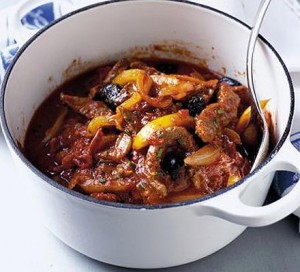
Ingredients:
- 1 onion, sliced
- 1 garlic clove, sliced
- 2 tbsp olive oil
- 300g pack beef stir fry strips, or use beef steak, thinly sliced
- 1 yellow pepper, deseeded and thinly sliced
- 400g can chopped tomatoes
- Sprig rosemary, chopped
- Handful pitted olives
Preparation and cooking times
Prep 10 mins Cook 20 mins
Method
1. In a large saucepan, cook onion and garlic in olive oil for 5 mins until softened and turning golden.
2. Tip in the beef strips, pepper, tomatoes and rosemary, then bring to the boil.
3. Simmer for 15 mins until the meat is cooked through, adding some boiling water if needed. Stir through the olives and serve with mash.
Make it vegetarian – Leave out the beef and cook 1 chopped aubergine and 1 chopped courgette along with the pepper. Finish by sprinkling over some feta cheese.
Per serving: 225 kcals, Protein – 25g, Carbohydrate – 7g, Fat – 11 g, Saturated fat – 3g, Fibre – 2g, Sugar – 6g, Salt – 0.87 g
Healthy Eating for Sport
Monday, August 9th, 2010Eating a healthy balanced diet will provide you with all the nutrients you need to take part in your favourite sport or activity.
This means eating a wide variety of foods, see below for how to get the balance right.
If you take part in a sport regularly, perhaps you’re a member of a club or team, or a regular at your local gym, then the best way to get the most out of your sport is to:
- drink plenty of fluids
- eat plenty of fruit and vegetables
- eat plenty of starchy foods (carbohydrate) to keep you going during exercise such as rice, bread, pasta (try to choose wholegrain varieties when you can) and potatoes.
- eat some protein-rich foods such as meat, fish, eggs and pulses
- have some milk and dairy foods
- just eat a small amount of foods high in fat, salt and sugar
- eat enough food for your level of activity. If you eat too little then you won’t be able to keep up your exercise levels
It is important to eat a variety of these foods to make sure we get all the nutrients our bodies need.
Timing of meals around workouts is just as important as what you eat if you want to keep your energy levels up. For the first two hours after exercise, muscles can refuel their glycogen stores twice as fast as normal so it’s important to eat carbohydrate-containing foods as soon as possible after a workout or exercise session.
See my next blog for more on starchy foods for exercise.
Why Eat More Fruit and Vegetables?
Monday, June 14th, 2010Eating a variety of fruit and vegetables will give you plenty of vitamins and mi nerals. For example, many are naturally high in folic acid, vitamin C and potassium. Fruit and vegetables are also a good source of fibre and other substances, such as antioxidants. All these nutrients are important for your health. Fruit and vegetables are generally low fat and low calorie foods. So eating fruit and vegetables instead of foods that are high in fat and added sugars may help you achieve or keep to a healthy weight.
nerals. For example, many are naturally high in folic acid, vitamin C and potassium. Fruit and vegetables are also a good source of fibre and other substances, such as antioxidants. All these nutrients are important for your health. Fruit and vegetables are generally low fat and low calorie foods. So eating fruit and vegetables instead of foods that are high in fat and added sugars may help you achieve or keep to a healthy weight.
Fruit and vegetables can help protect you from diseases such as cancer and heart disease. Try to have at least 5 portions of fruit and vegetables a day. In fact, the more you eat the better! Fresh, frozen, chilled, canned in juice (not syrup), 100% fruit juice, and dried fruit and vegetables all count.
 Check the table below to find out what counts as one portion. How many do you eat a day?
Check the table below to find out what counts as one portion. How many do you eat a day?
If you are not yet eating 5 a day, then build up to this amount (or more!).
Try to choose 5 different fruits and vegetables.
But what is a portion?
| ONE portion = 80g = any of these |
| 1 apple, banana, pear, orange or other similar sized fruit |
| 2 plums or similar sized fruit |
| ½ a grapefruit or avocado |
| 1 slice of large fruit, such as melon or pineapple |
| 3 heaped tablespoons of vegetables (raw, cooked, frozen or tinned) |
| 3 heaped tablespoons of beans and pulses (however much you eat, beans and pulses count as a maximum of one portion a day) |
| 3 heaped tablespoons of fruit salad (fresh or tinned in fruit juice) or stewed fruit |
| 1 heaped tablespoon of dried fruit (such as raisins and apricots) |
| 1 handful of grapes, cherries or berries |
| a dessert bowl of salad |
| a glass (150ml) of fruit juice (however much you drink, fruit juice counts as a maximum of one portion a day) |
Tips: a day’s worth might be: a banana and a glass of fruit juice with breakfast, salad and an apple with lunch, and carrots with your dinner.


